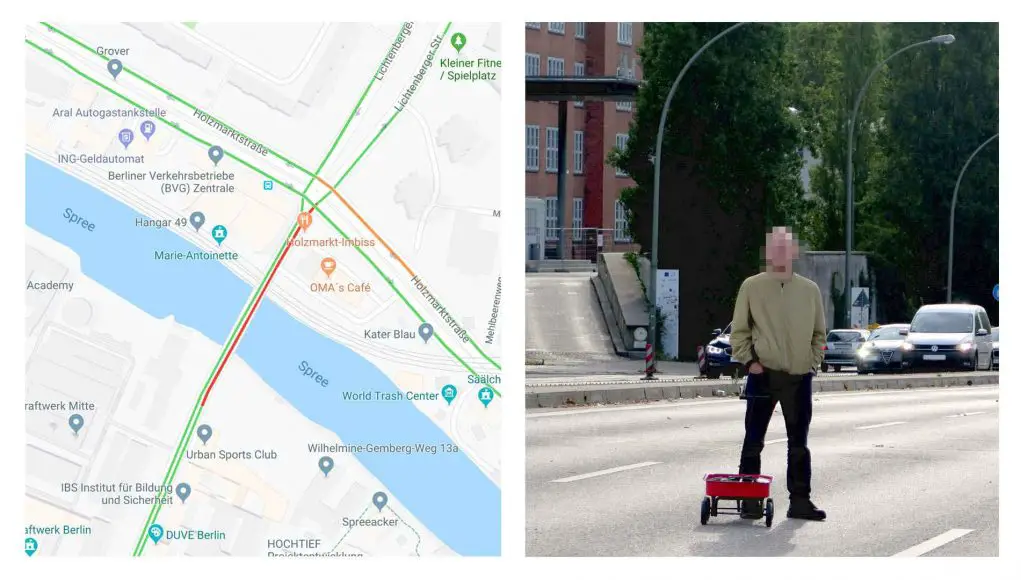German performance artist Simon Weckert makes virtual traffic jams with his tiny red cart full of phones
Have you ever wondered how Google Maps knows how much traffic is on a street in real time? German performance artist Simon Weckert knows (along with thousands of others) and has exploited Google’s technology to “Hack” google maps and to get the world thinking.
Check out a tweet explaining in a nutshell what he does and a short video showing Simon doing his thing.
99 smart phones in a pull-cart = instant traffic jam https://t.co/Ms8CYV8iLk pic.twitter.com/gNDa05OeVi
— Internet of Shit (@internetofshit) February 3, 2020
Google Maps Live Traffic works because of you. Every time you open up Google Maps for directions, you must agree to share your location with Google. In return, Google shows you how much traffic is in your area and gives you the best route to use.
Not only does Google know your location, if you keep Google Maps on, you also send speed data as well.
If Google sees dozens of cars crawling at 5 MPH on a street that normally you can drive 60 MPH on, Google “knows” the street is clogged with traffic and labels that street red.
Simon essentially “hacks” Google by fooling Google Maps into thinking there are literally 99 cars at walking speed wherever Simon is. This, in turn, shifts the traffic map from green into red thus affecting the potential directions people use.
This is all an exercise in power. According to Simon on his website,
With its Geo Tools, Google has created a platform that allows users and businesses to interact with maps in a novel way. This means that questions relating to power in the discourse of cartography have to be reformulated. But what is the relationship between the art of enabling and techniques of supervision, control and regulation in Google’s maps? Do these maps function as dispositive nets that determine the behaviour, opinions and images of living beings, exercising power and controlling knowledge? Maps, which themselves are the product of a combination of states of knowledge and states of power, have an inscribed power dispositive. Google’s simulation-based map and world models determine the actuality and perception of physical spaces and the development of action models.
You might write off Simon as a bit of a loon for taking the time out to do this but it’s honestly an intriguing thought worth considering. If Simon can do this with a pull cart of phones, imagine what someone else with less savory intentions can do.
Can you imagine if there were dozens of Simons with karts of phones roaming the streets on an important polling day? They could virtually shut off streets and have a real effect on the polls.
Simon’s work is thought provoking and forces us, and even Google, to reconsider how data is shared.
What do you think about this clever “Google Map Hack?” Let me know in the comments below.



